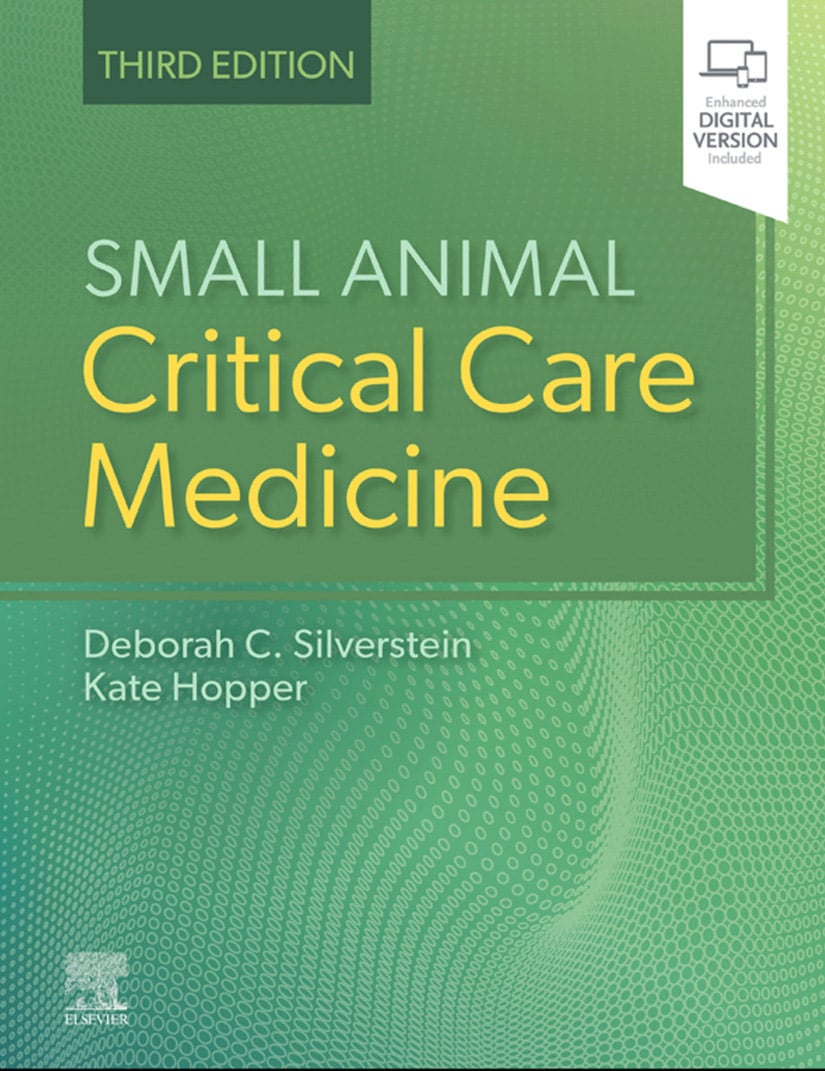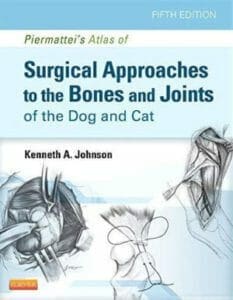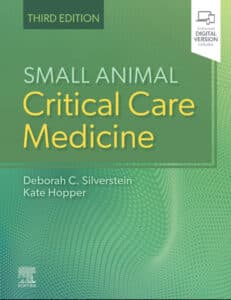
By Deborah C. Silverstein and Kate Hopper
Small Animal Critical Care Medicine 3rd Edition has been significantly updated to focus specifically on diagnostic and management strategies for the sickest veterinary patients. It covers critical care medical therapy, monitoring, and prognosis — from assessment and stabilization through the entire course of intensive care treatment. To make therapeutic decisions easier, clear and practical guidelines address underlying clinical findings, pathophysiology, outpatient follow-up, and long-term care. Editors Deborah Silverstein and Kate Hopper, along with leading experts from the veterinary emergency and critical care profession, have created this indispensable resource to help you and your team provide the highest standard of care for your critically ill patients.
- NEW! Coverage of high-flow nasal oxygen therapy and both core and advanced concepts for mechanical ventilation helps you deliver high-quality care to patients with respiratory failure.
- NEW! Chapters on current critical care topics include Assessment of Intravascular Volume, Urine Osmolality and Electrolytes, and Infectious Disease Control in the ICU.
- NEW! Chapters on novel procedures offer coverage of tracheal stents, urinary diversion techniques, and an in-depth review of point-of-care ultrasound with extensive figures and images.
- NEW! Coverage of increasingly prevalent problems seen in the intensive care unit includes coagulation disorders of the critically ill patient, feline aortic thromboembolism, oxygen toxicity, and treatment of severe hypertension.
- NEW! Chapters on shock fluid therapy and transfusion therapy provide cutting edge information on how to prevent complications and maximize resources.
- NEW! Prevention of Compassion Fatigue and Burnout chapter addresses this major challenge currently affecting the veterinary profession.
- NEW! Algorithms and figures throughout the text clarify key concepts and aid in diagnosis and treatment.
- NEW! Enhanced eBook, included with the purchase of a new print copy of the book, provides online access to a fully searchable version of the text and makes its content available on various devices.
- UPDATED! Coagulation section includes chapters on hemostasis, management of the bleeding patient, coagulation and platelet monitoring, and viscoelastic monitoring.
- EXPANDED! Pharmacology section offers coverage of cannabis, trazadone, gabapentin, pimobendane, and appetite stimulants.
This Book is Available For Premium Members Only














![Ettinger’s Textbook of Veterinary Internal Medicine 9th Edition [PDF+Videos] Ettinger’s Textbook of Veterinary Internal Medicine 9th Edition [True PDF+Videos]](https://www.vet-ebooks.com/wp-content/uploads/2024/10/ettingers-textbook-of-veterinary-internal-medicine-9th-edition-100x70.jpg)

![Textbook of Veterinary Diagnostic Radiology 8th Edition [PDF+Videos+Quizzes] Thrall’s Textbook of Veterinary Diagnostic Radiology, 8th edition PDF](https://www.vet-ebooks.com/wp-content/uploads/2019/09/textbook-of-veterinary-diagnostic-radiology-8th-edition-100x70.jpg)






